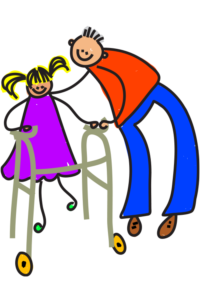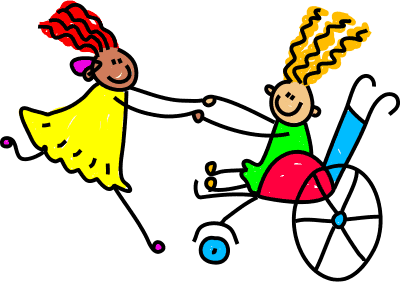Acute transverse myelitis (ATM) is an attack of inflammation (swelling) of the spinal cord. We are unsure of the exact cause. Sometimes it occurs after a viral infection other times there is no warning. It is caused by the body’s immune system becoming mis-programmed which leads to the immune system cells attacking the healthy myelin covering the nerves in the spine.
What is Myelin?
Myelin is an insulating layer, or sheath that forms around nerves, including those in the brain and spinal cord. This myelin sheath allows electrical impulses to transmit quickly and efficiently along the nerve cells. When the myelin sheath is damaged, nerves do not conduct electrical impulses normally.
What are the signs and symptoms of ATM?
The symptoms of ATM can come on quickly and depend on where in the spine the swelling occurs.
- If the swelling is in the lower back part of the spinal cord, then symptoms can include back pain, weakness of both legs and bowel and bladder problems.
- If the swelling is around the neck (cervical) spinal cord area, then both arm and leg weakness can occur and in severe cases breathing can be affected.
How is ATM treated? (Your child’s doctors will discuss these options with you and your child).
- Intravenous steroids. Steroids help reduce the inflammation in your spinal column.
- Plasma exchange therapy.
- Antiviral medication. Some people who have a viral infection of the spinal cord may be treated with medications to treat the virus.
- Pain medication. Chronic pain is a common complication of transverse myelitis.
- Medications to treat other complications. Your doctor may prescribe other medications as needed to treat problems such as muscle spasticity, urinary or bowel dysfunction or other complications associated with transverse myelitis.
What is the prognosis of ATM?
The long-term prognosis for children with ATM varies and some children do make a very good recovery. Some children are left with some motor weakness and/or with residual problems such as weakness in bowel and bladder function.
What are the signs and symptoms of Acute Transverse Myelitis (ATM)?
The symptoms and signs depend upon the level of the spinal cord involved. The spinal cord contains nerve fibres that carry messages between the brain and the body. Inflammation of the spinal cord interrupts these pathways causing:
- Muscle weakness in the lower limb (sometimes arms are involved depending on the level of the lesion)
- Sensory disturbance (the ability to feel parts of your body)
- Bowel and bladder dysfunction (the ability to control your bladder and bowels)
- Back and / or nerve pain
There may be partial or total paralysis and sensory loss below the level of the lesion but the majority of patients show good recovery with physiotherapy and medical interventions.
How can Physiotherapy help my child with Acute Transverse Myelitis (ATM)?
 It is important to ensure your child has access to a paediatric physiotherapist with neurological experience. Once the doctors, nurses and therapists at the hospital are happy for your child to be discharged your child is likely to need ongoing physiotherapy.
It is important to ensure your child has access to a paediatric physiotherapist with neurological experience. Once the doctors, nurses and therapists at the hospital are happy for your child to be discharged your child is likely to need ongoing physiotherapy.
Physiotherapy will be able to help your child improve their muscle strength, gross motor and functional skills . See the list below :
- Muscle strength and gross motor skills – Your child’s physiotherapist will provide treatments and set up exercises to help improve your child’s strength and gross motor skills.
- It is important to do this at your child’s home and or school with good functional goals.
- Strengthening and improving your child’s gross motor skills will help them to become more independent and join in with activities with their friends and family.
- Your physiotherapist may suggest some treatment sessions to be carried out in water.
- Aquatic therapy or pool-based exercising is great for rehabilitation of ATM.
- The water is a great way to strengthen muscles as it acts as a resistance.
- Fitness levels – Physiotherapy treatment will help your child to achieve everyday tasks by improving fitness, energy levels and stamina.
- Functional Mobility – Your physiotherapists can assess and advise you and your child on mobility aids such as wheelchairs and walking aids to improve functional mobility.
- Physiotherapy treatment can also teach transfers (getting in and out of a wheelchair, bed, car, etc).
- Gait (walking) assessment – Your child may also require gait analysis which is an assessment of how they walk.
- Your physiotherapist may then refer your child to an orthotist to assess them further for orthotics.
- Orthotics are leg splints which can help your child walk. Sometimes orthotics are prescribed with adapted footwear.
- Pain – Some people with transverse myelitis experience pain.
- Physiotherapy treatment will help reduce pain and stiffness by teaching you new ways of moving and improving your posture.
Contact us for an informal chat to ask any questions specific to your child. We have children’s physiotherapists who have experience of helping children with acute transverse myelitis within Surrey, Sussex, Kent, Hampshire and parts of London – https://wanderlusttherapyforkids.com/contact/


